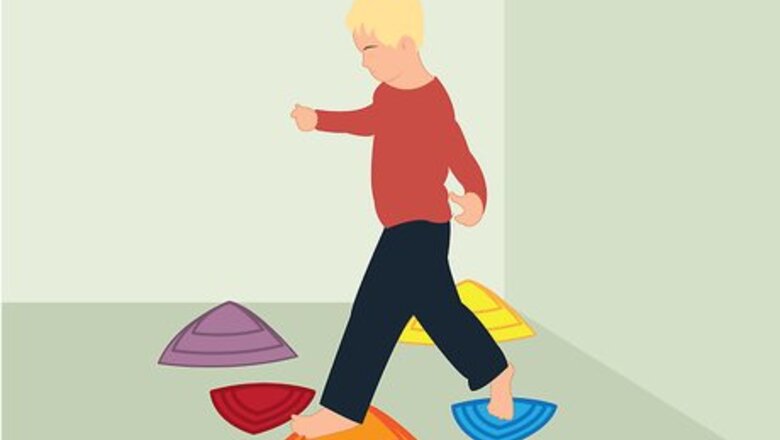
views
X
Trustworthy Source
Zero to Three
Nonprofit organization dedicated to providing resources to ensure that all babies and toddlers have a healthy start to life.
Go to source
Selecting Toys for Gross Motor Skills
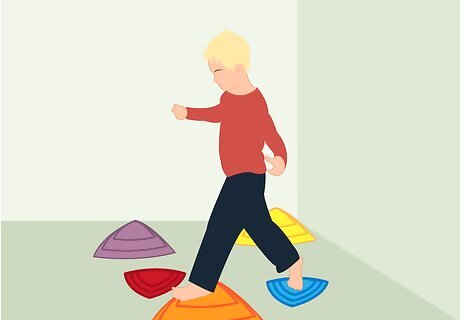
Be aware of the importance of gross motor skills. Gross motor skills are skills like agility, balance, and posture. Your child needs to use large muscle groups to improve her gross motor skills, often when she is standing, walking, running, or shift her weight while standing. Having good gross motor skills will ensure your child has proper coordination of her arms and legs and a good sense of balance. Gross motor skills are a major element of strong physical development in a child, often through repetitive motions and motions that require agility and balance. Your child can work her gross motor skills through running and walking but toys can also allow her to work them in smaller, more manageable ways.
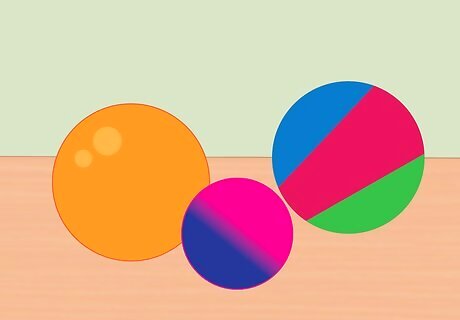
Look for balls in different shapes and sizes. Foam balls, hollow balls, and bouncy balls are all great for gross motor skill development, especially if your child tends to be more active. Always make sure the balls are not small enough to be swallowed by your child, especially if your child is an infant. Toddlers and preschoolers often possess the motor skills to throw and bounce balls with their playmates. Infants benefit from sensory balls with different patterns and textures. These balls will keep your infant’s attention for longer and encourage them to move. Another option is to get your child small tactile toys like patterned balls or tactile discs. Tactile discs come in a set of five or ten discs with different textures that your child can touch, pick up, and move on her own.
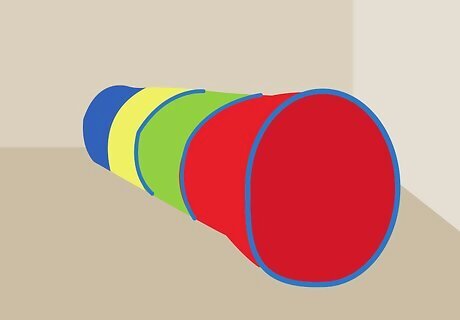
Get your child a tunnel or boxes to form a tunnel. You can find nylon tunnels made for children at your local toy store or online. You can also purchase foam or nylon boxes that your child can move to form a tunnel. Tunnels and tents are great for building coordination and balance, especially if you are looking for an indoor space to promote positive development in your child. Encourage your child to crawl through the tunnel or tent. Help her move the boxes to make tunnels or an obstacle course where she has to crawl, stand, and use her weight to move the boxes. Place their favorite toy at the other end of the tunnel as bait.
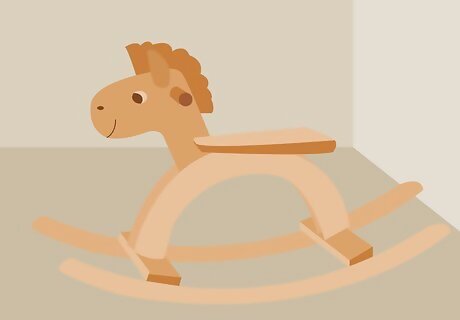
Consider a push bike or a wooden horse. A small plastic tricycle made for small children or a wooden rocking horse are both great for developing gross motor skills. Look for a push tricycle with no pedals, as this will force your child to use her legs to push herself back and forth on the tricycle. These types of toys help your child to build her coordination skills and her weight distribution skills. Practice riding a bike or a wooden horse can also prepare your child for balancing on a real bike, or a real horse. Make sure the bike or horse is sturdy before you allow your child to play on it. These toys are best for children two years and older, or children who have started to walk on their own.
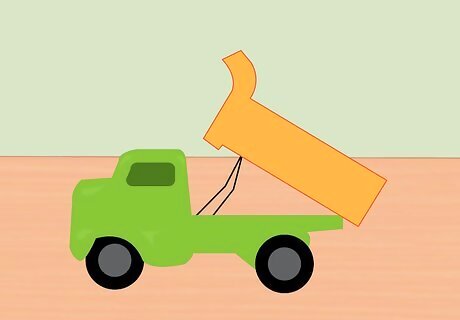
Get your child a large plastic truck or push toy. A push toy is good for infants (birth-18 months) and toddlers (18 months-35 months), as they encourage the development of coordination skills and weight distribution skills. You could get your child a large plastic truck that she can push or another push toy like a plastic lawnmower or a small plastic baby stroller. Look for a push toy that is not too big or too small for your child. Your child should be able to move the push toy when she is standing and when she is sitting, as you do not want to force her to use her legs all the time.
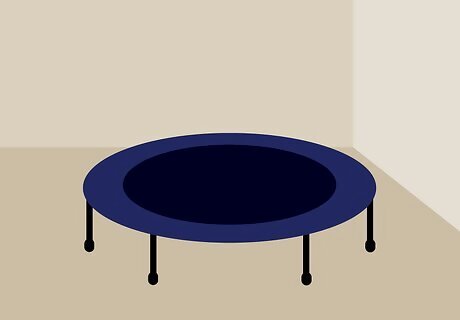
Buy an indoor trampoline or a plastic slide. If you are looking for a larger toy that is more of an investment, you may consider an indoor trampoline or a large plastic slide. These toys are good for toddlers and preschoolers who are walking and are starting to get comfortable with their weight and coordination skills. Supervise your child carefully when they’re using the slide or trampoline. Look for a trampoline that has a safety net around it so your child does not injure herself on the trampoline. You can then let your child play with other gross motor skill toys like bouncy balls on the trampoline. The plastic slide should also have high sides so your child cannot fall out of the slide easily. Place soft mats around the slide so your child has a soft landing if she does slip on the slide. Try not to let her use the slide unsupervised and play with her on the slide, holding her if necessary.
Looking for Toys for Fine Motor Skills
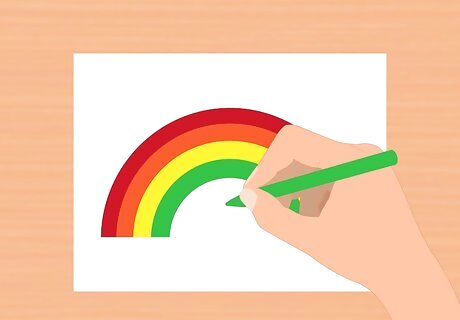
Understand the importance of fine motor skills. Your child develops her fine motor skills through repetitive movements, as this builds her muscle memory. Fine motor skills are skills that are performed with smaller muscle groups, such as her fingers, wrists, and hands. These types of toys will also help your child improve her eye-hand coordination and be more precise with her body movements. You should encourage the development of fine motor skills in your child at an early age, from infanthood into preschool. Reinforcing fine motor skills will allow your child to get used to small movements and give her strong agility skills.
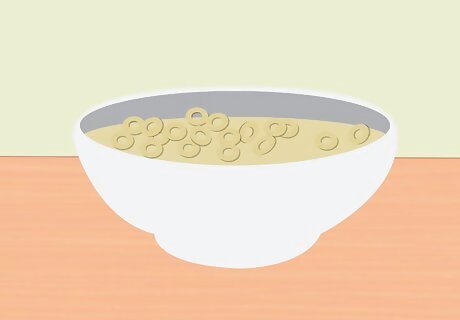
Let your child play with Cheerios when she is an infant. Play with small edible object is a great and easy way to improve fine motor skills in infants, especially as they are prone to put almost anything in their mouths. Give your child Cheerios and other small, chewable foods that she can play with in her high chair or when sitting on a clean floor. Encourage her to move the Cheerios around and pick them up and put them in her mouth. You can put the food in a bowl and have her pick them out of the bowl or on a cookie sheet with raised edges so she can play with them without making a big mess.
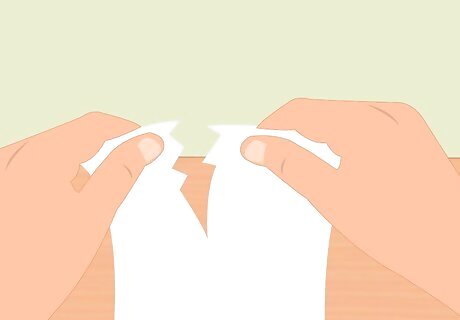
Allow your child to rip up scrap paper. Scrap printer paper can act as a useful fine motor skills toy as it allows your child to use her hands and arms. Avoid newspaper, as the newsprint can be dirty and get everywhere. Have your child rip up the paper into pieces and then count the pieces together to practice numbers with her. Make sure the paper is acid free and safe for use for children. You can also use felt pieces, cut into small bits if you are worried about your child putting paper in her mouth.
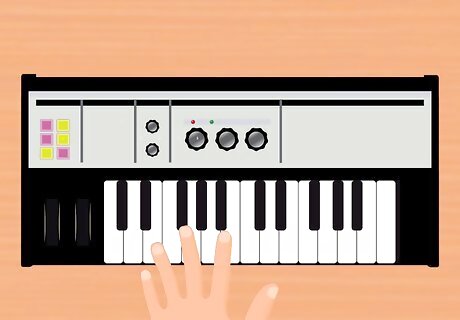
Give your child a small keyboard. Giving your child a musical instrument made for children’s play will allow your child to use all five of her senses. Playing a keyboard, even badly, can help your child improve her eye-hand coordination and her control over her finger movements. Try to teach her how to hit the keys properly and to use her fingers properly on the keyboard. You can also teach your preschooler basic chords or basic songs like “Twinkle Twinkle Little Star” on the keyboard to improve her listening and playing skills. Another option is to get your child a set of toy drums so she can hit them with her hands and improve her eye-hand coordination. A xylophone is another popular toy musical instrument for children that is good for developing fine motor skills.
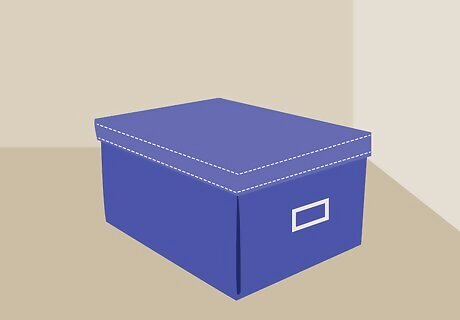
Get your child a cloth toy box. A cloth toy box is usually a small box made of cloth that contains smaller plastic toys. Your child can learn to open the box on her own and take out the smaller toys to play with them. This will allow her to work on her fine motor skills and understand how to open and close boxes. She can then also be taught to put the items back into the box during clean up time. You can add larger or more complex toys to the cloth toy box as your child grows older. You may decide to include puzzle pieces or toys that require critical thinking to challenge your child in her older years.
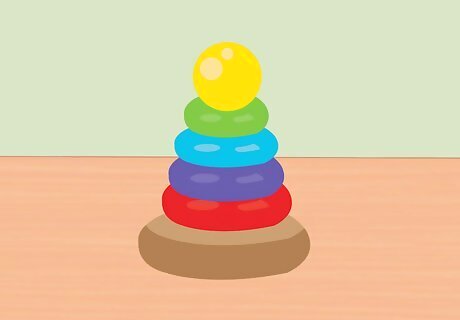
Look for stackable toys. This could be a plastic pyramid made of stackable pieces or stackable animal toys. Stackable toys allow your child to learn how to build a structure and put together pieces to form a whole. You can also give your child Legos as a way to improve her fine motor skills and learn how to put small pieces together.
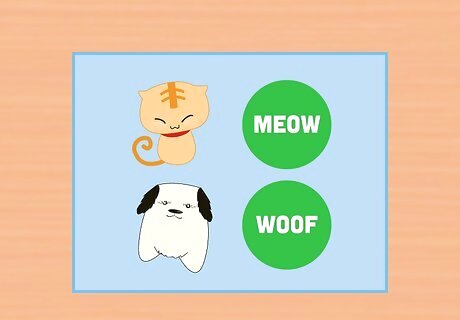
Get your child a pattern-recognition game. This could be a set of colored pieces that come in match-able pairs or printed cards that require your child to match an animal to the animal sound it makes. These types of games allow your child to improve her eye-hand coordination and her critical thinking skills at the same time.
Choosing Toys for Emotional and Cognitive Development

Be aware of the importance of emotional and cognitive development in children. Play is essential to the emotional and cognitive development in children, as play allows children to practice their verbal and nonverbal communication and their body language. Cognitive development is your child’s ability to process information, emotions, reason, and memory. Having strong cognitive skills is also an essential element to developing strong critical thinking skills. Children can also process emotions through play and gain self-confidence, as playing with others requires children to respond to the feelings of others. Healthy play in childhood will often lead to a healthy adulthood, especially in terms of emotional processing and coping mechanisms for strong emotions. Speak with your child empathetically and roleplay how different characters feel in differing situations.
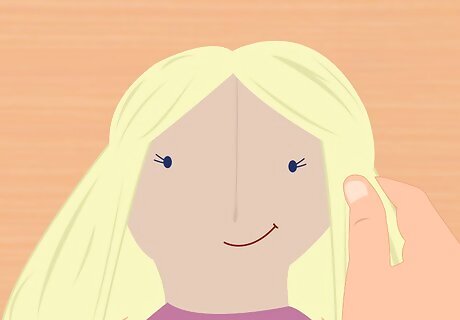
Let your child choose a doll or a small stuffed animal. Having a special doll or stuffed animal to take care of can help your child develop stronger emotional skills. She can use the doll to explore relationships and emotions in a healthy, safe way. Allow your child to pick her own doll or stuffed animal, as this will make it feel more like it belongs to her. There are many types of dolls currently available on the market, from American Girl dolls to Barbie dolls. Look for a doll that looks like your child or let your child choose her own doll. Stuffed animals can also be good for emotional development, as they allow your child to display nurturing and caring skills towards the stuffed animal. Make sure the stuffed animal is made for children and does not have any parts that can be swallowed or toxic to children.
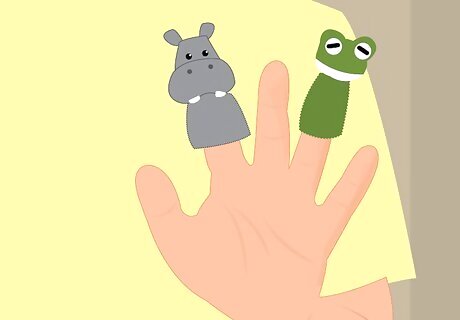
Make finger puppets for your child. Finger puppets can be made from socks, cloth, or felt. You can then draw faces with different emotions on the finger puppets and use them to perform a scene or play for your child. You can also show her how to use the finger puppets herself. This will allow her to play around with emotions and relationships in a positive, exploratory way. Finger puppets also allow your child to access her imagination and expand her vocabulary as she creates voices for the puppets. Puppets can help her develop her ability to think abstractly and to improve her eye-hand coordination.
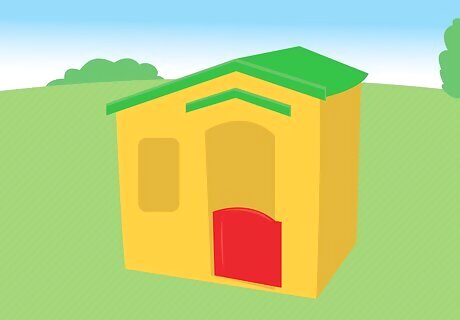
Get a playhouse for your child. Encourage your child to develop cognitive skills through play in a dollhouse or a playhouse. Your child may act out scenes that she has watched adults do already or other scenes from her imagination. You can also stock the playhouse with accessories to make it feel more realistic. Another option is to get your child a mini-kitchen where she can pretend to prepare and cook meals. This type of toy is great for her cognitive skills and her fine motor skills.

Allow your child to play dress up. Let your child explore her imagination by playing dress up with your clothing or with a tickle trunk of costumes and accessories. Dress up with your child and act out a scene from a small audience of family members or let your child direct you on an imaginary stage. These kinds of activities will allow your child to use her imagination and feel free to express her emotions through play.
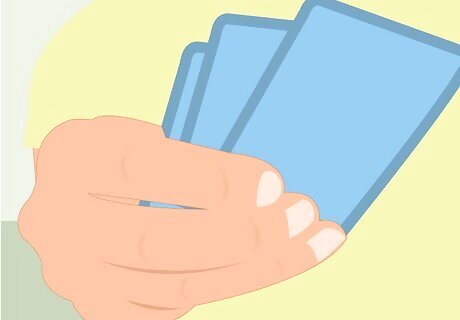
Practice activity cards with your child. Activity cards are often made of plastic and are full of bright, big pictures. Activity card sets can focus on different emotional reactions, vocabulary, sounds, or actions. Practice these cards with your child to help build her self-awareness and her self-esteem. They are also great for building language skills and sensory awareness.

Get felt books for your child. Books are a great way for your child to name and learn objects and words, especially early in their development. Look for thick books with pages that are easy for your child to turn or felt books that have tactile qualities that will encourage your child to hold them and look at them. You can read the books to your child or encourage your child to read with you and listen to the sound of words as you read.



















Comments
0 comment